Where Is The Garden Of Earthly Delights
The Garden of Earthly Delights
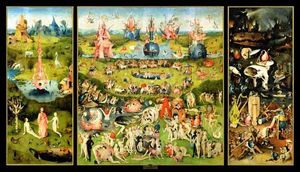
- Date of Creation:
- circa 1505
- Height (cm):
- 220.00
- Length (cm):
- 389.00
- Medium:
- Oil
- Support:
- Wood
- Subject:
- Fantasy
- Art Movement:
-
Renaissance
- Created by:
- Current Location:
-
Madrid, Spain
- Displayed at:
-
Museo Nacional del Prado
- Owner:
-
Museo Nacional del Prado
- The Garden of Earthly Delights Page's Content
- Story / Theme
- Inspirations for the Work
- Analysis
- Critical Reception
- Related Paintings
- Locations Through Time - Notable Sales
- Artist
- Art Period
- Bibliography
-

Detail from the central panel
-

The Garden of Earthly Delights
-

Henry III of Nassau-Breda
The Garden of Earthly Delights is Hieronymus Bosch's best known work. A grand, three-part altarpiece, this triptych was the artist's most ambitious and unconventional project and in it he used vivid imagery to ensure a painting with a complexity of meaning.
The date of this work remains something of a mystery but 20th century art historians agree that it was most probably created between 1503 and 1504 or even later. The original title for this piece has not survived.
The Garden of Earthly Delights shows Adam and Eve and various animals on the left panel, cavorting nude figures, oversized fruit and earthly delights in the middle (from which the triptych takes its name), and hell ensuring torment for sinners on the right panel. This work sums up the history of the world and focuses on the progression of sin.
When closed, the exterior panels depict God creating the Earth, painted in grisaille which was rather bland but a common technique that ensured the vibrancy and appeal of colors on the inner panels.
The first mention of The Garden of Earthly Delights was in 1517, one year after Bosch's death, when Italian canon Antonio de Beatis discussed the decoration in the town palace of the House of Nassau, Brussels. Due to the fact the work has no central religious image, it had been presumed to be an atypical altarpiece. Nevertheless, despite its larger-than-normal panels and lack of donor portraits some still believed it could have been created for a church.
After de Beatis' description, however, it was proposed that The Garden of Earthly Delights was commissioned by Engelbrecht II of Nassau or his successor, Henry III of Nassau-Breda, who was a renowned art collector. Large Italian paintings of this scale were typically commissioned to celebrate a wedding.
-

Erwin Panofsky
-

Rhinoceros
Albrecht Durer
Many writers and historians have attempted to find the source of inspiration for The Garden of Earthly Delights but to no avail. In 1953 Erwin Panofsky wrote that, "In spite of all the ingenious, erudite and in part extremely useful research devoted to the task of "decoding Jerome Bosch", I cannot help feeling that the real secret of his magnificent nightmares and daydreams has still to be disclosed. We have bored a few holes through the door of the locked room; but somehow we do not seem to have discovered the key".
One suggested influence is humanist and writer Desiderius Erasmus who lived in 's-Hertogenbosch, Bosch's hometown, in the 1480s and is likely to have known the artist. Glum points to similarities between the tone of The Garden of Earthly Delights and Erasmus's view that theologians "explain (to suit themselves) the most difficult mysteries ... is it a possible proposition: God the Father hates the Son? Could God have assumed the form of a woman, a devil, an ass, a gourd, a stone?"
It is also possible that Bosch was inspired by German artist Albrecht Dürer. An avid student of exotic animals, Durer created many sketches based on his visits to European zoos. He visited 's-Hertogenbosch during Bosch's lifetime, and it's probable the two artists were acquaintances.
-

Adam and Eve
-

Central panel
-

The final panel
Composition:
The scenes depicted in The Garden of Earthly Delights are believed to be in chronological order, running from left to right. The first section shows a scene from paradise - the Garden of Eden - and this is thought to be the moment God appears to Adam and Eve, before the eating from the tree of knowledge.
Upon waking from a peaceful sleep Adam sees God holding Eve by her wrist and he gives his blessing to their union. God is painted younger than he is on the outer panels and all of the figures are notably refined.
The centre panel of the triptych features men and women participating in sexual and ungodly activities. It was a popular belief in the middle ages that debauchery was the worst of all sins committed by man and that the source of such temptation came from women.
The final panel depicts a gruesome image of hell and here Bosch illustrates different punishments for the individual sins carried out by man.
Color palette:
The outer panels of The Garden of Earthly Delights lack color and this was probably to ensure consistency with Netherlandish triptychs of the time, which saved their beautiful shades for the inner panels. The tones used are definite yet subtle.
It could also be the case that this triptych reflects a time before the sun and moon were created, which, according to Christian theology, were responsible for providing the earth with light.
Use of technique:
Bosch painted each panel, particularly the last one depicting hell, in a rather sketchy manner. This was distinct from traditional Flemish techniques whereby multiple transparent glazes were applied, resulting in a smooth surface that hid traces of the artist's brush work.
The Garden of Earthly Delights is not very well preserved and paint on the middle section in particular has flaked off around joints in the wood.
Mood, tone and emotion:
In this triptych Bosch is elaborating on his early ideas and his thought process has clearly and brilliantly evolved. The Garden of Earthly Delights is a mix of fantasy, chaotic scenes and monstrous images starkly contrasted with the nature of mankind in the age of innocence.
-

José de Sigüenza
-

Carl Justi
-

The Flight into Egypt
Martin Schongauer
Early Spanish writers referred to The Garden of Earthly Delights as La Lujuria meaning "lust". A harmonious artwork, The Garden's dreamlike quality captures nude figures and giant animals in an otherworldly landscape with great ease and detail. Bosch has clearly demonstrated his ability to conjure up beautiful yet troubling images of sensuality and this triptych exemplifies his iconographic originality.
As the triptych was on public display at the House of Nassau, many people observed it and Bosch's reputation swelled throughout Europe. The popularity of this work is evident by the number of surviving copies-in oil, engraving and tapestry - that were requested by affluent patrons.
There were also a number of forgeries circulating after the artist's death, the majority of which focused solely on the central panel and stayed true to the original image. Such copies were typically painted on a lesser scale, and vary considerably in quality. Some materialized as wall tapestries.
Over the years art historians and critics have tried fervently to interpret The Garden of Earthly Delights and many theories have been proposed as to its precise meaning. The first in-depth critique came from José de Sigüenza in his 1605 History of the Order of St. Jerome. He proposed that rather than being heretical or merely absurd, the panels in this work "are a satirical comment on the shame and sinfulness of mankind".
Art historian Carl Justi pointed out that the left and center sections are steeped in tropical and oceanic atmosphere, and concluded that Bosch was inspired by "the news of recently discovered Atlantis and by drawings of its tropical scenery, just as Columbus himself, when approaching terra firma, thought that the place he had found at the mouth of the Orinoco was the site of the Earthly Paradise".
When The Garden of Earthly Delights was painted, tales from the New World were spreading fast and they inspired poets, painters and writers alike. Despite the fact that this triptych features countless unearthly and imaginary creatures, Bosch's work still interested an elite humanist and aristocratic audience with its cultural references. Furthermore, he reproduced a scene from Martin Schongauer's engraving The Flight into Egypt.
20th century art historians cannot agree if The Garden of Earthly Delight's central panel is a moral warning or a view of a paradise that no longer exists. American writer Peter S. Beagle describes it as an "erotic derangement that turns us all into voyeurs, a place filled with the intoxicating air of perfect liberty".
-

Museo Nacional del Prado
Madrid
When Henry III passed away The Garden of Earthly Delights was passed to his nephew, William the Silent, founder of the House of Orange-Nassau.
In 1568, the Duke of Alba seized the work and brought it to Spain, where it became the property of Don Fernando, the Duke's illegitimate son and the Spanish commander in the Netherlands.
At an auction in 1591 the painting was acquired by Phillip II and two years later he presented it to the Escorial. In 1939 the triptych was passed with other works by Bosch to the Museo Nacional del Prado where it can still be viewed today.
-

The Ship of Fools
Hieronymus Bosch
Hieronymus Bosch dedicated his entire career to producing works that broke away from traditional Flemish painting. His work used vivid imagery to depict moral and religious ideas and stories, and he set himself apart from his contemporaries with the disturbing detail of his panel pictures, perfectly exemplified in The Garden of Earthly Delights.
Produced in the middle stages of his career, triptychs like this were highly ambitious projects to undertake and Bosch successfully merges elements of fantasy and chaos with pleasant scenes of mankind in the age of innocence. Such works were evidence of his developing thought processes and the evolution of his unique style.
Relying heavily on symbolism and working freely, many of Bosch's paintings addressed the torments of hell and his later pieces in particular were highly original and sometimes offered a literal translation of verbal metaphors set out in the Bible. Both wonderful and terrifying, his works were unforgettably garish and his technique remains unmatched to this day.
-

Ghent Altarpiece
Jan van Eyck
-

Annunciation Triptych
Rogier van der Weyden
The Early Netherlandish Renaissance essentially began with the work of Jan van Eyck and came to an end in around 1520. This artistic period evolved with the early and high Italian Renaissance but is seen as a distinct artistic culture that was independent of the humanist developments taking place in central Italy.
As Early Netherlandish painters such as Bosch represent the medieval artistic heritage in northern Europe and respond to Renaissance principles, their works can be classified as both Early Renaissance and Late Gothic.
Paintings from this period adopted Jan van Eyck's attention to detail and usually featured byzantine iconography. Religion was a popular theme, as were small portraits. Narrative and mythological works were much less common than in Italy.
Hieronymus Bosch worked at a time when the medieval period was coming to an end and therefore his paintings most probably reflect his anxiety over a changing world. Many of the paintings he produced are similar to the works created by the Surrealists centuries later. They too paint a world based on fantasy and therefore Bosch's works are strangely modern.
To find out more about the life and works of Hieronymus Bosch please choose from the following recommended sources.
• Bosch, Hieronymus. Bosch - The Complete Paintings. Granada Publishing, 1980
• Bosing, Walter. Hieronymus Bosch 1450-1516: Between Heaven and Hell. The Complete Paintings. Taschen GmbH, 2001
• Copplestone, Trewin. The Life and Works of Hieronymus Bosch. Shooting star press, 1995
• Gibson, Walter S. Hieronymus Bosch. Thames & Hudson, 1973
• Harris, Lynda. The Secret Heresy of Hieronymus Bosch. Floris Books, 1995
• Silver, Larry. Hieronymus Bosch. Abbeville Press Inc. , 2006
Where Is The Garden Of Earthly Delights
Source: https://www.artble.com/artists/hieronymus_bosch/paintings/the_garden_of_earthly_delights
Posted by: simpsonderignatim.blogspot.com

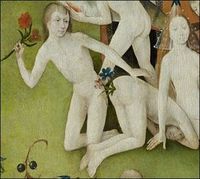
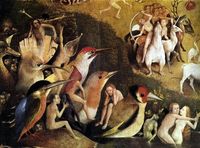
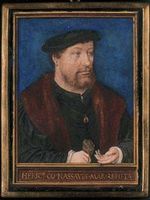
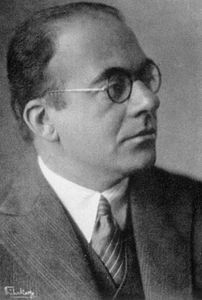
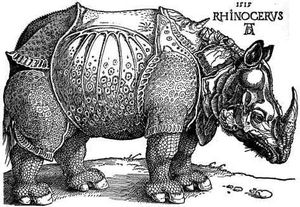
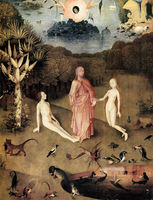
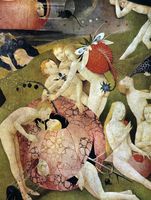
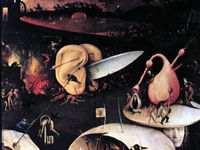
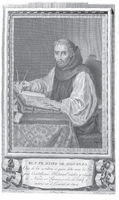
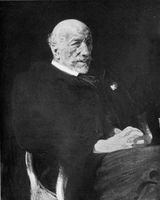
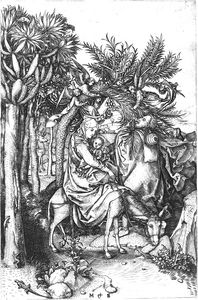
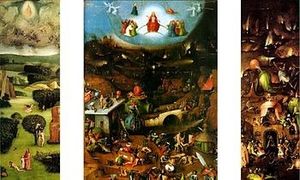
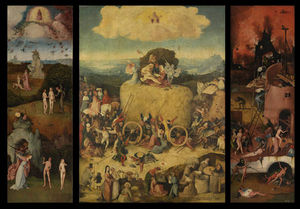
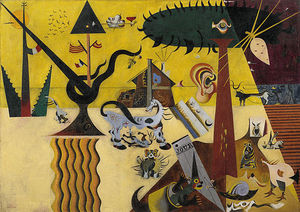
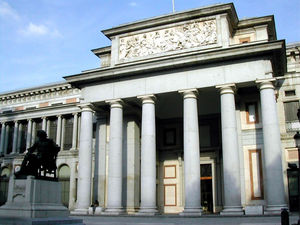
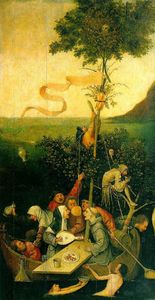
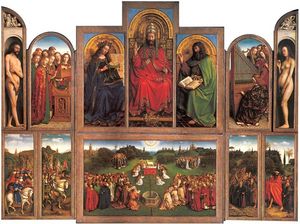
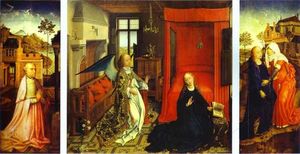
0 Response to "Where Is The Garden Of Earthly Delights"
Post a Comment